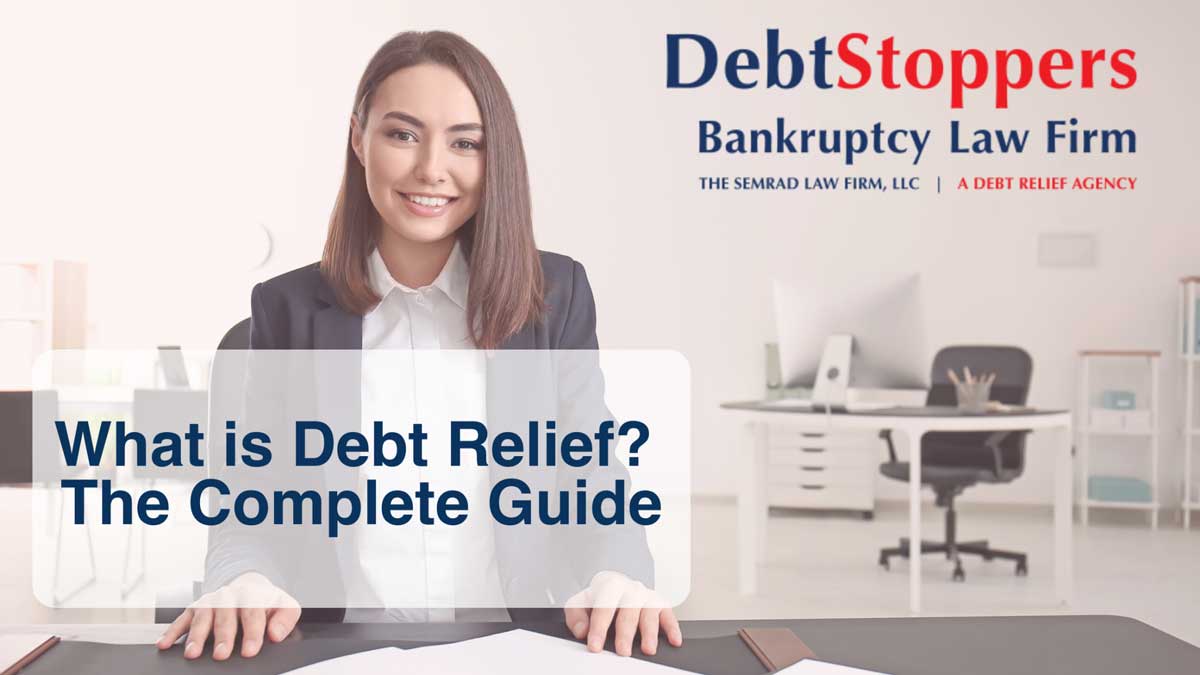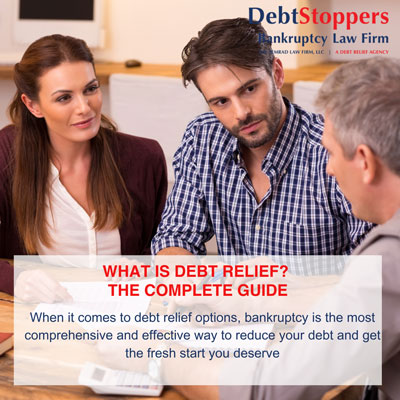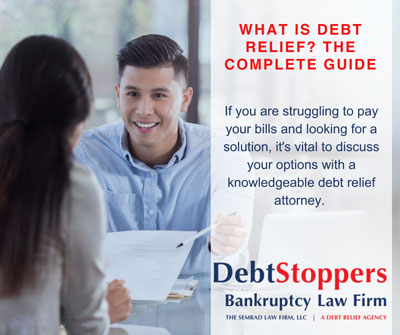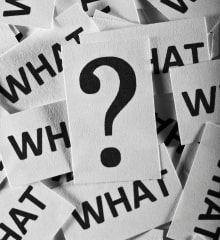What is Debt Relief? The Complete Guide

Do you feel overwhelmed and confused by the debts that have been piling up? Are you trying to figure out what you should do about it? Countless Americans are in the same situation, struggling to make their payments while facing mounting financial stress.
Debt relief is one way to get back on your feet and gain control over your finances. In this blog, we'll go over everything you need to know about what debt relief is and how it can help you build a more secure future for you and your family.
Debt Relief Options
If you are struggling financially, there are a variety of different debt relief options available to you. We’ve summarized what you need to know about the most common types of relief in the sections below.

Bankruptcy
When it comes to debt relief options, bankruptcy is the most comprehensive and effective way to reduce your debts and get the fresh start you deserve. This is true no matter what your financial situation might be.
If your income is low enough, Chapter 7 bankruptcy allows you to eliminate the majority of your debts while still keeping most (if not all) of your possessions. And even if you don’t qualify for relief under Chapter 7, you can still use Chapter 13 to reduce and reorganize your debts into an affordable payment plan.
Debt Settlement
Under this approach, you attempt to negotiate with creditors and reduce your outstanding balance by making a lump sum payment that’s less than what you actually owe. However, success rates with this method are low, and your creditors are under no obligation to negotiate with you.
Additionally, debt settlement companies require you to stop making your payments, which will destroy your credit. And even if your creditors agree to reduce your debts, settlement cannot stop lawsuits or wage garnishments, and you have to claim the amount settled as taxable income on your taxes.
Debt Consolidation
With this method, you attempt to lower your debts by consolidating them into a single payment, typically by taking out a new loan. While this can help you lower your total interest rates, what many people don’t realize is that it’s only helpful if you can afford the new loan payment, as it won’t do anything to eliminate or reduce the amount you owe.
Likewise, this option typically only works for credit cards, and, like debt settlement, it cannot stop collection lawsuits or wage garnishments.
Credit Counseling
Credit counseling is an excellent tool that teaches families what they need to do to avoid unnecessary debts through services such as budgeting assistance and educational materials and workshops. However, this type of help won’t do much for families who are already struggling due to financial difficulties that are beyond their control.

Debt Forgiveness
True debt forgiveness is hard to come by. It is typically only available for student loans, medical debts, and unpaid taxes. Even then, it is only granted under extremely limited circumstances, and you will be required to pay taxes on the amount forgiven. There are virtually no circumstances where the balances on your credit cards or mortgage will be forgiven.
How To Choose The Right One
Taking control of your finances can often be a difficult and intimidating process. However, with the help of a debt lawyer, you can assess what the best solutions are for your situation. While there are various options, for many people, bankruptcy is a powerful tool that can offer long-term financial stability and get rid of unhealthy debt loads.
If you are struggling to pay your bills and looking for a solution, it’s vital to discuss your options with a knowledgeable debt relief attorney. DebtStoppers is here to walk you through every step of the process and answer any questions or concerns you may have. Don’t wait until it’s too late — take charge of your future and contact us today to schedule a free consultation with one of our experienced attorneys.





